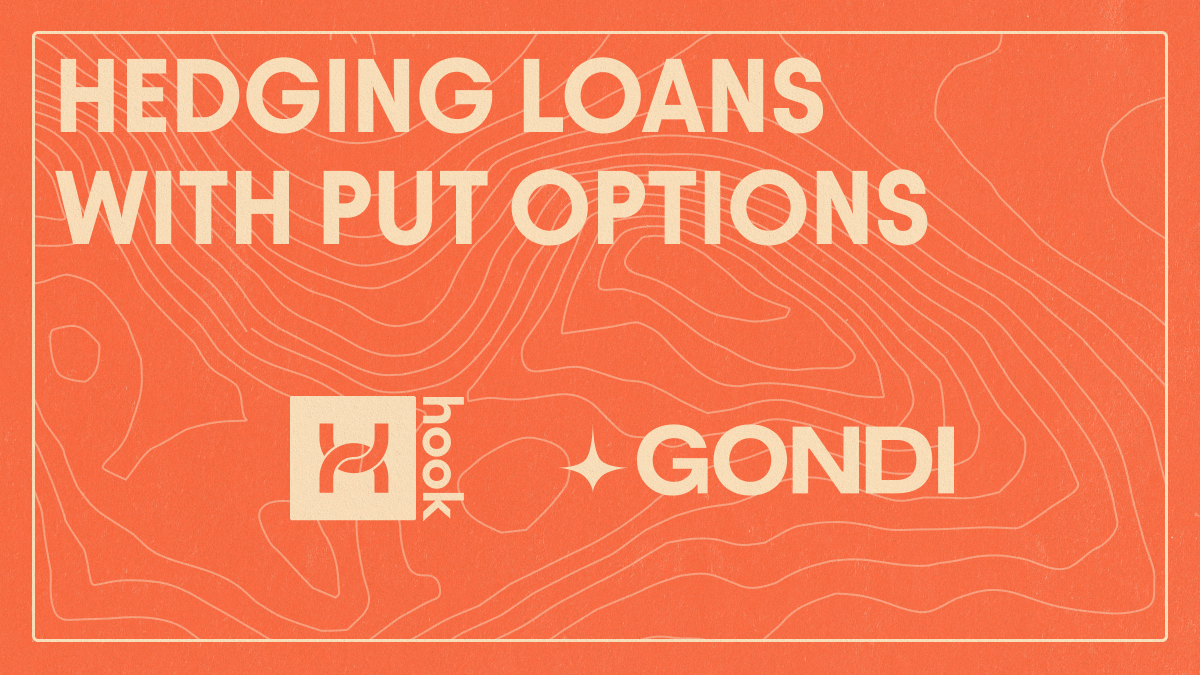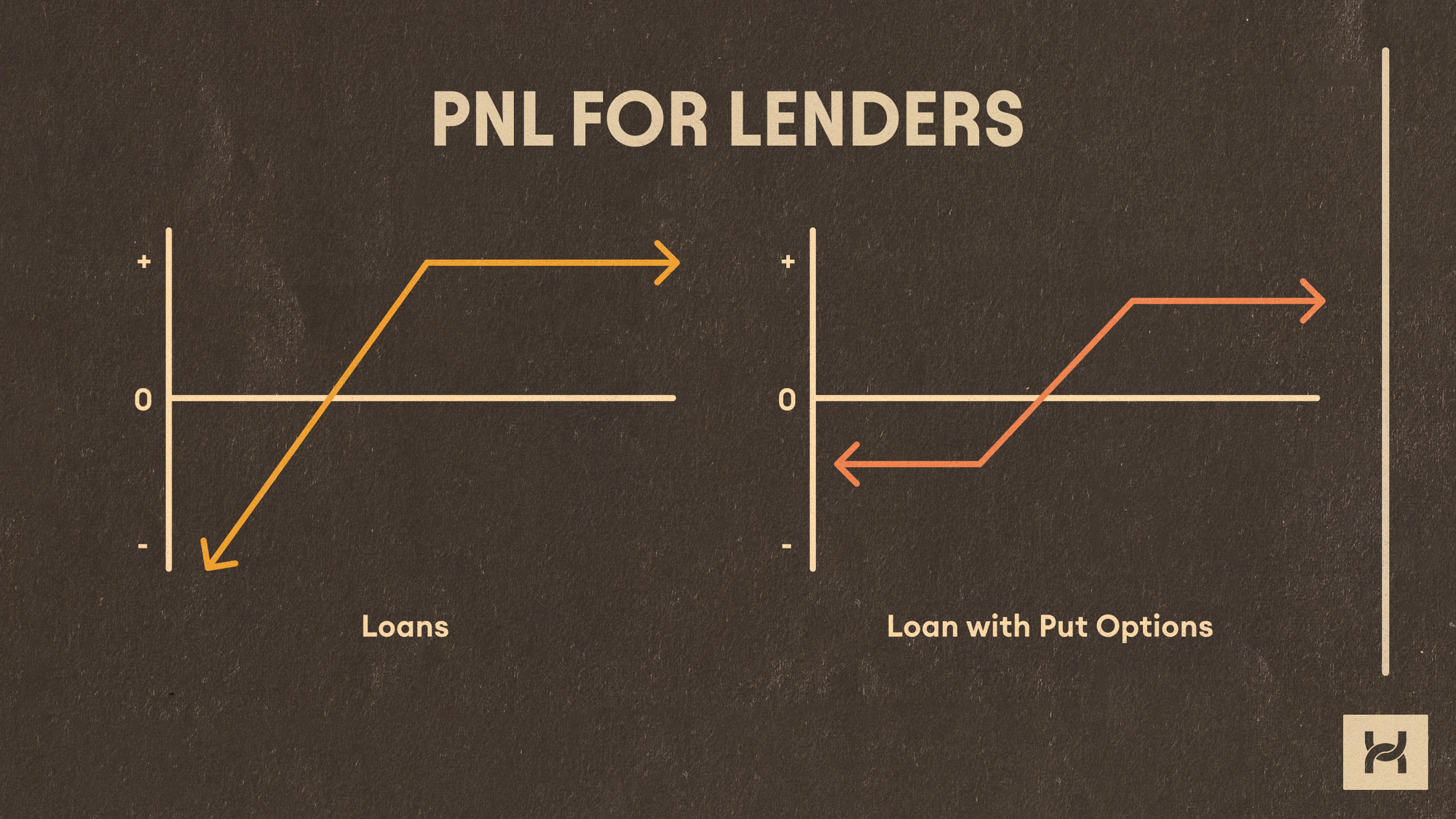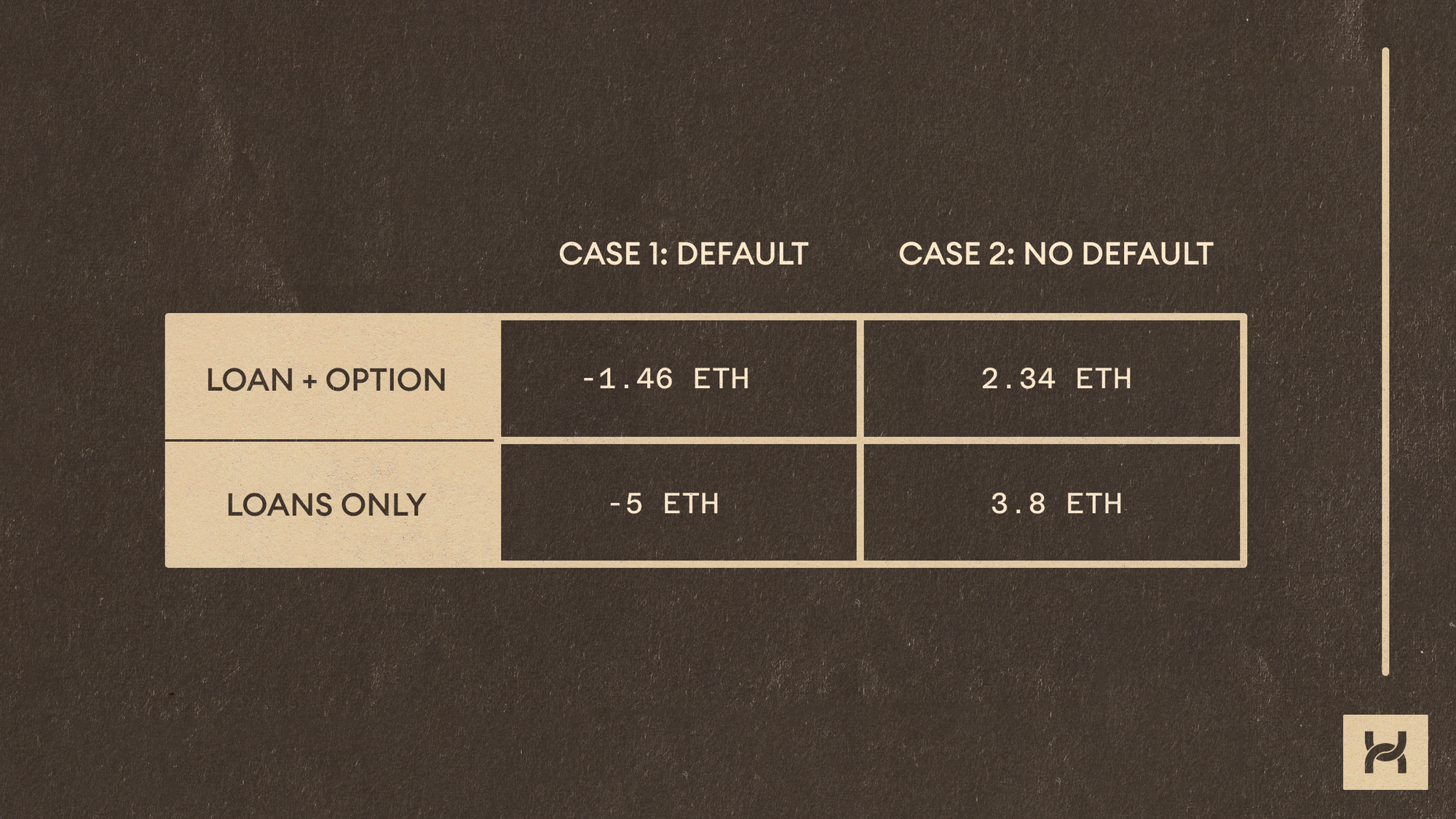Hedging Loans with Put Options - Hook Odyssey Strategies

Hook Odyssey’s new architecture allows traders to create strategies to help scale their NFT Finance activity. One strategy we’re excited to share more about is the ability for lenders to hedge their downside risk through put options.
In this blog, we’ll discuss how lenders on Gondi, a new NFT lending protocol, can reduce their risk by hedging their loans with Hook Odyssey’s put options.
How NFT Lending Works on Gondi
Gondi is a peer-to-peer (P2P) NFT lending protocol. There are a few features that differentiate Gondi from other NFT lending protocols like Arcade and NFTfi. Understanding these features is necessary for lenders to understand their risks in order to hedge efficiently.
1/ Refinancing
Lenders can refinance outstanding loans by offering terms that lower the borrower’s current APR by 1% or more. Lenders can create offers that extend the loan’s duration or increase the principal amount as long as the daily interest decreases.
Loans will be instantly refinanced if a lender makes an offer that reduces the borrower's daily interest AND maintains or extends the current due date.
2/ Partial Refinancing (Multi-Tranche Loans)
Loans can also be partially refinanced, allowing multiple lenders to be on the same loan. The due date and principal amount will be the same for all tranches to maintain the loan’s overall risk profile.
3/ Origination Fees
In addition to an interest rate (APR), lenders can attach a one-time origination fee to a loan. While accrued interest is paid at the end of the loan’s duration, origination fees are deducted from the principal amount at the beginning of the loan.
Risks of Fixed-Term NFT Lending
If a borrower defaults on a loan, the lender will be able to claim the underlying NFT to resell.
The borrower could default for multiple reasons, including not being able to repay the principal amount and interest. The more serious concern is if the borrower chooses to default because the value of the underlying NFT dropped below the principal amount. In this situation the lender can end up with large losses.
How to Hedge Loans with Hook

Lenders on Gondi can hedge their loans using Hook Odyssey’s put options. As mentioned earlier, Gondi’s architecture makes hedging slightly different from P2P loans because of the ability to refinance. Lenders looking to hedge need to consider the following.
- Since loans can be refinanced and repaid prematurely, lenders should ensure that the put option market is liquid. In either case they want to be able to resell the put option for its fair value since they no longer need to hedge. Hook Odyssey’s new architecture allows for the creation of synthetic put options, which will help create deeper liquidity across all markets. Gondi lenders can also opt-in to receiving notifications to stay up to date with their loans. If a refinancing occurs, they can likely exit their put option position quicker.
- Lenders can make offers with a 0% interest rate and attach an origination fee to the loan. This way they receive an upfront payment, which they can use to purchase the put option. There is less need for a liquid put options market to resell into if they receive the entirety of the expected interest upfront.
Example
A Gondi lender creates a collection-wide loan offer on Cryptopunks.
Duration: 365 Days
Principal: 40 WETH
Current Floor: 44.44 WETH
APR: 9.99%
Expected Interest: 3.80 ETH
A CryptoPunk holder accepts the offer. 40 WETH is transferred from the lender to the borrower and the Punk is deposited into Gondi’s escrow contract. In 365 days, the lender will receive 43.8 ETH back from the borrower unless they default on the loan.
The lender can protect their downside risk by purchasing a 40 ETH put option on Hook expiring in 365 days. Based on our estimates, the premium for this put option would be 1.46 ETH.
Below are the calculated PnL amounts for this portfolio in two cases. In the first case, the borrower defaults on the loan because the Cryptopunks floor price falls to 35 ETH. In the second case, the Cryptopunks floor price does not fall and the borrower does not default on the loan. These examples assume the loan is not refinanced and no early repayments occur.

In Case 1, the borrower defaults on the loan because the the repayment amount is higher than the value of their NFT. If the lender does not hedge with a put option, they can lose their entire principal. In this case, they would lose 5 ETH. Hedging with a put option reduces their downside to the cost of the put option (the premium).
In Case 2, the borrower does not default on the loan and the lender earns a positive return. The cost of the put option slightly reduces the lender’s return. Despite this, lenders should consider hedging with put option because it can reduce their downside risk when borrowers default and ultimately help them scale their lending activities.
